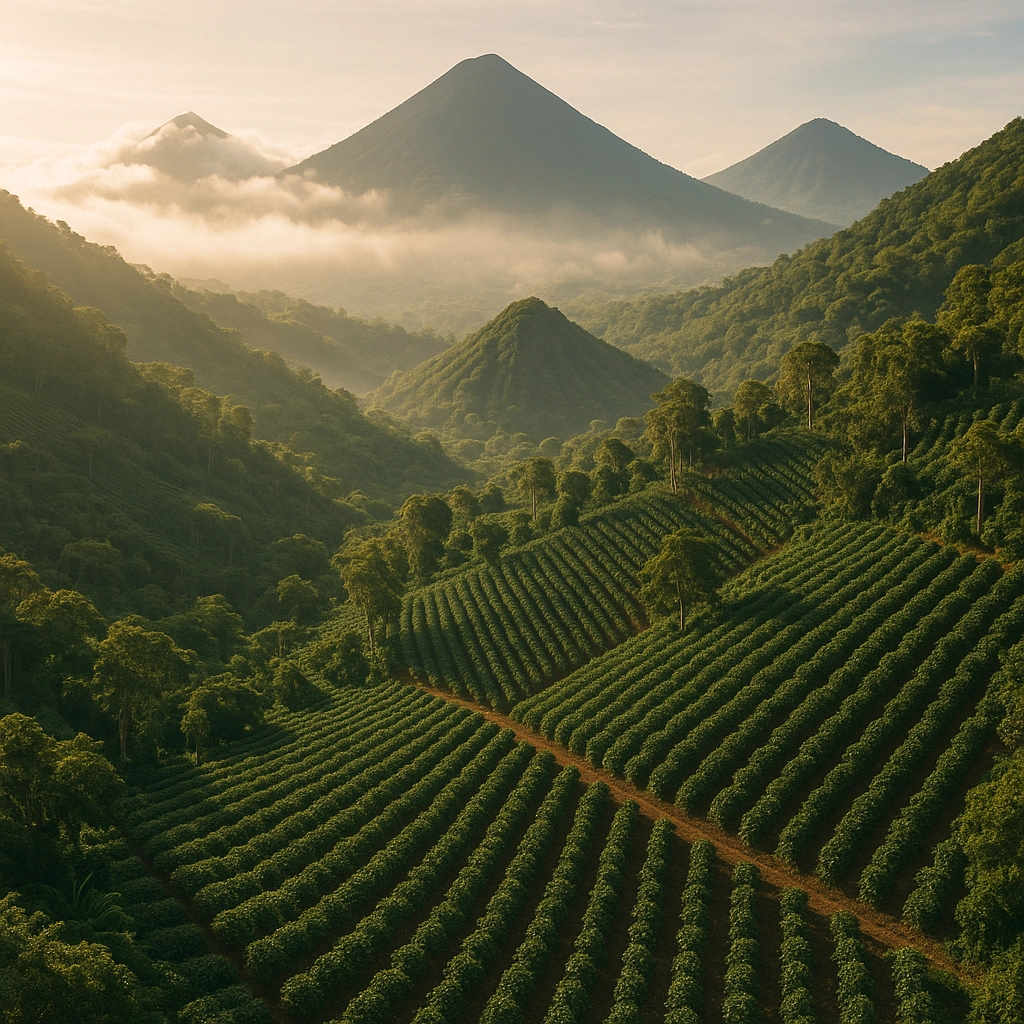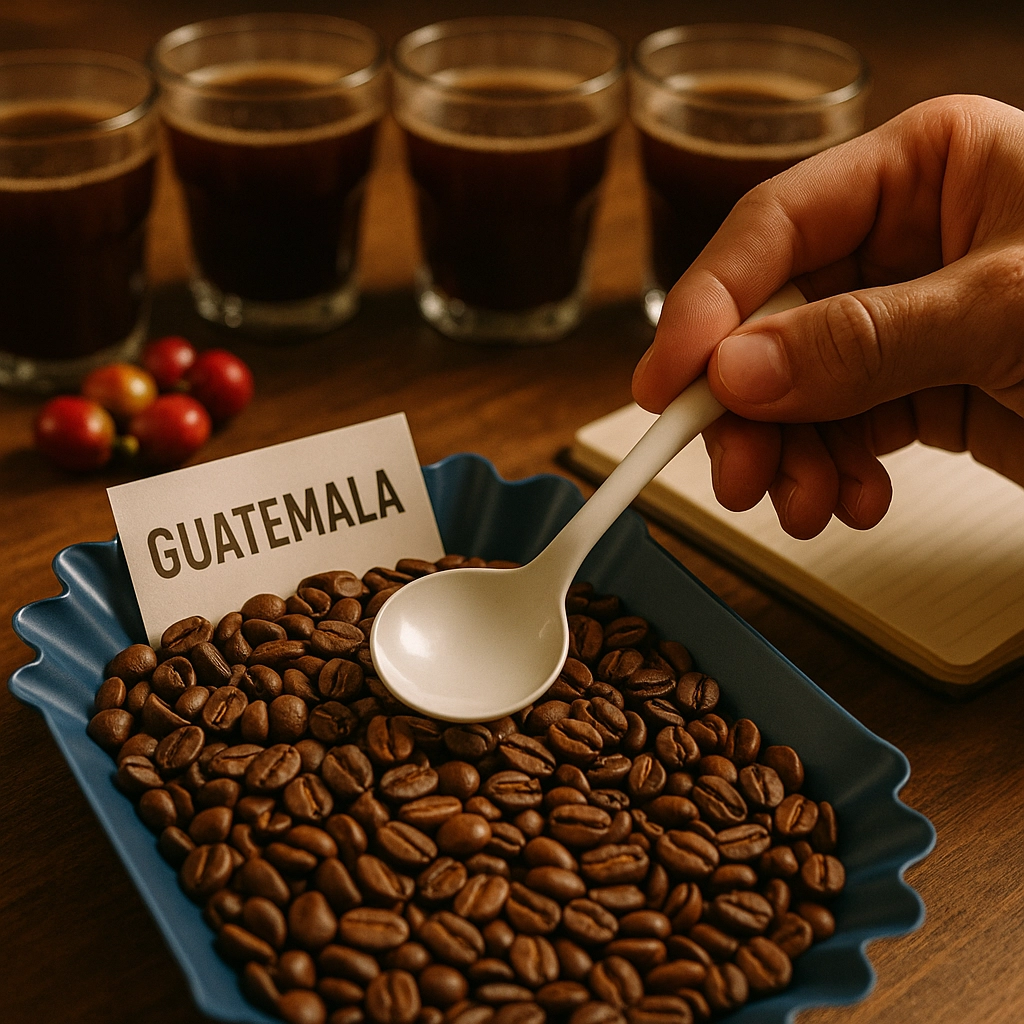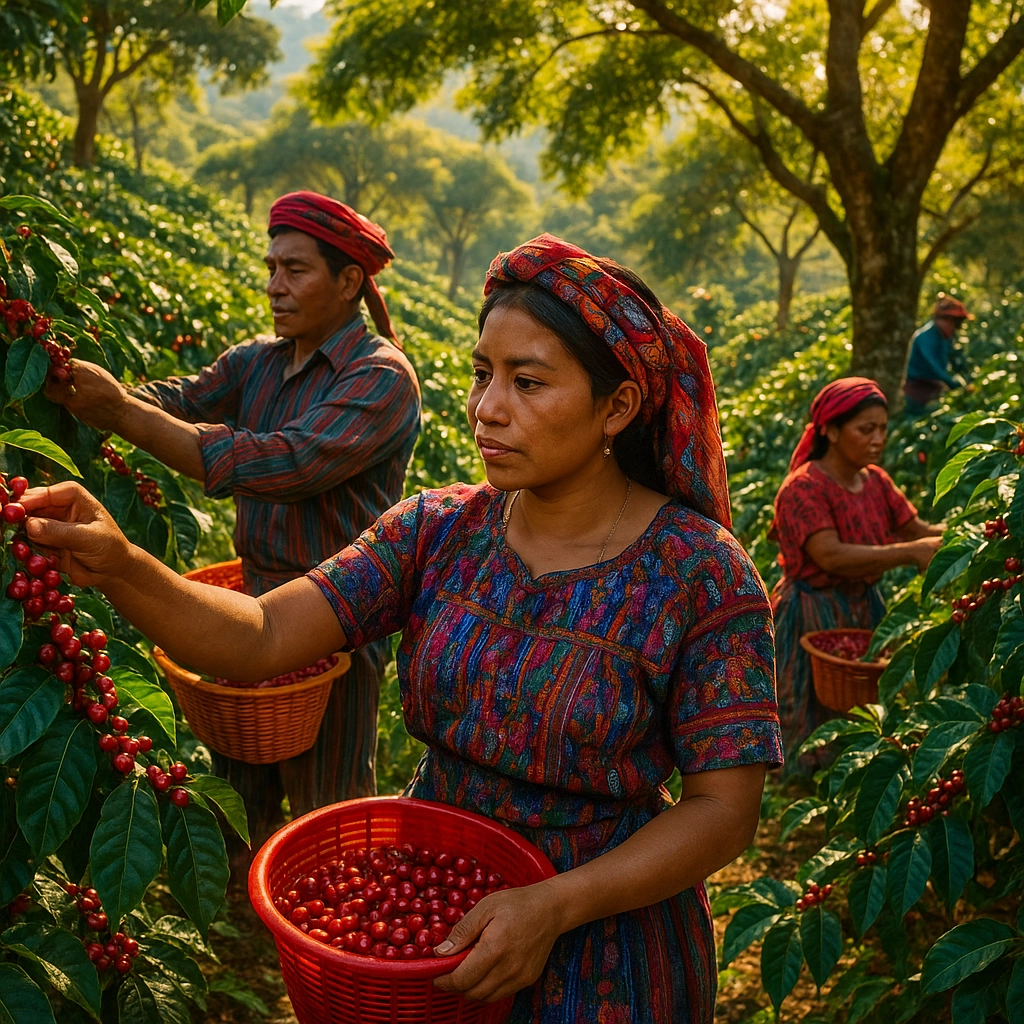A Deep Dive into Guatemalan Coffee: Flavor, Regions, and What Makes It Unique

The Geographic Foundation of Excellence
Guatemalan coffee is celebrated worldwide, and a big part of its acclaim comes down to geography. The country’s dramatic volcanic landscape gives rise to lush valleys and sky-high peaks, most of which are blanketed with coffee trees. These mountains offer unique volcanic soils, infused with essential minerals that feed the coffee plants and set the stage for complex flavor.
High elevation is another defining factor: most coffee farms in Guatemala sit between 4,000 and 6,500 feet above sea level (about 1,200–1,700 meters). Some of the best coffees grow even higher. This altitude slows bean maturation, allowing sugars and acids within the cherry to develop with extra nuance, resulting in the vibrant flavors Guatemalan coffee is known for.
The country’s microclimates, shaped by variations in rainfall, sunlight, and temperature from one valley to the next, are the reason a coffee from Huehuetenango can taste so different from one in Atitlan or Antigua—even though they might be just a few hours apart by car.

Distinctive Flavor Architecture
Body and Texture
Most Guatemalan coffees are known for their medium to full body. This means you get a cup that's pleasantly substantial—often creamy or silky—making it a cozy morning brew or an excellent base for espresso drinks.
Flavor Notes
The first thing most people notice about Guatemalan coffee is its strong backbone of chocolate flavor. Whether it leans milky and sweet or ventures into deep cocoa territory, chocolate is a signature note. Alongside the chocolate, you’ll typically find:
- Caramel or brown sugar sweetness: Natural, mellow, and perfectly paired with the chocolate notes.
- Nutty undertones: Almond, walnut, and sometimes even hazelnut sneak in.
- Fruity highlights: The fruits you’ll notice depend on region and farm—from apple and berry to stone fruit or citrus zest.
- Floral aromas: Especially common at higher altitudes, giving certain coffees a delicate lift.
Vibrant Acidity
If you like your coffee with a little zip (but not an acidic punch to the gut), Guatemalan beans are for you. They’re prized for their vibrant, citrus-like acidity that brings brightness and definition to the cup, balancing perfectly with the body and sweetness.
Regional Terroir and Specializations
It’s no exaggeration to say Guatemala has some of the most clearly defined coffee regions in the world. Each area’s conditions—soil, climate, altitude—leads to remarkable differences in the cup.
Huehuetenango
If you’re chasing boldness and fruit flavor, Huehuetenango should be at the top of your list. Nestled in the rugged northwest, this region produces coffees with crisp acidity, intense sweetness, and a spectrum of fruit—from berry to citrus—often with a hint of wine-like complexity. Huehuetenango’s high, dry climate helps protect the cherries from frost, and the careful, traditional hand-picking of these small farms ensures quality and consistency.
Antigua
Antigua is perhaps the most famous coffee region in Guatemala, often considered “classic” Guatemalan coffee. Located in a valley surrounded by three volcanoes, Antigua’s terroir is as iconic as it gets. Here you’ll find coffees with a well-rounded profile: milk chocolate, toffee or brown sugar, hints of citrus, and sometimes floral top notes. Every harvest is carefully processed and sorted, with quality inspectors discarding any cherries that don’t make the cut.
Fraijanes Plateau
The Fraijanes Plateau offers up a distinctly bright cup, with lively acidity and a robust body. This region’s pronounced dry and rainy seasons, coupled with volcanic ash deposits, help create coffees that stand out with their clarity and structured flavor, often with nutty and chocolate tones.
Atitlan Region
Known for its lush volcanic slopes surrounding Lake Atitlan, this region produces coffees with distinctly floral acidity—sometimes with spicy or chocolaty accents. Often classified as “Strictly Hard Bean,” Atitlan coffees excel in clarity and complexity, reflecting their lofty growing altitudes and lake-moderated microclimate.

Traditional Cultivation and Processing Methods
What separates Guatemalan coffee from so many other origins is the attention to tradition and quality at the farm level. Most coffee is grown on family-run farms or by smallholder farmers—people who have been perfecting their craft over generations.
From Cherry to Bean
Harvest season runs from December to April. Throughout this period, farmers gravitate to hand-picking, only choosing cherries at their optimal ripeness. This ensures the final cup is free from unripe or overripe flavors.
Washed & Sun-Dried
Guatemala’s coffee is predominantly washed and sun-dried. Cherries are pulped and fermented to remove the sticky mucilage before a long sun-drying process—which often takes place on open patios. This traditional approach not only preserves the clarity and acidity of the beans but also highlights the origin’s unique flavors.
Arabica Varieties
The country primarily grows Arabica types like Bourbon, Typica, Catuai, and Caturra. Each brings something special—Bourbon for rich body and sweetness, Catuai and Caturra for vibrant acidity and complexity.

Quality and Global Recognition
All these factors—volcanic soil, altitude, microclimates, careful cultivation—combine to make Guatemalan coffee a staple in cafés and roasteries the world over. The beans frequently show up on the menus of specialty coffee shops, star in national barista competitions, and often set the benchmark for Central American quality.
Traceability is a hallmark of Guatemala’s smallholder system. Many single-origin bags can be traced right down to the farm, co-op, or even specific lot, allowing coffee lovers to explore the nuanced differences between neighboring mountains, valleys, and even families.
For us at Carolina Coffee Works, Guatemalan coffees are must-haves in our single origin lineup for good reason: they represent a perfect balance of familiarity (thanks to those chocolatey, nutty notes) and adventure (from bright citrus to floral and tropical fruit). They showcase what’s possible when craftsmanship and nature work hand in hand.
Looking to taste Guatemalan coffee for yourself? Browse our Single Origin Collection or get in touch—our team would love to help you pick the perfect roast that brings these vibrant flavors to your cup.

